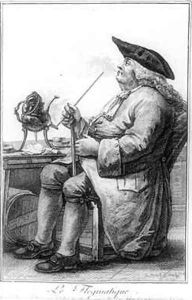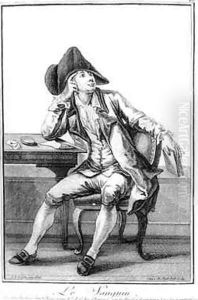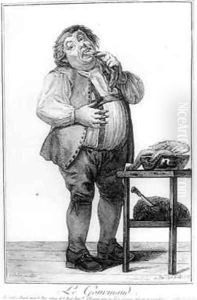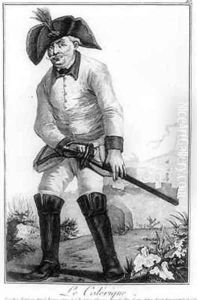Goez, Joseph Franz von Paintings
Joseph Franz von Goez was an Austrian artist, primarily known for his work as an engraver, who was born on February 9, 1754, in Leoben, a small town in Styria, Austria. He was active during the late 18th and early 19th centuries, a period that was marked by the Enlightenment and the emergence of Romanticism in European art. Goez is often recognized for his contribution to the development of the aquatint, a variant of etching that allowed for the creation of tonal effects resembling watercolor washes.
Not much is documented about Goez's early life or training. However, it is known that he was active in Vienna, the vibrant heart of the Habsburg Empire, which was a significant cultural center at the time. Vienna attracted many artists, musicians, and intellectuals, and Goez would have been part of this dynamic environment. His work as an engraver involved a meticulous process that required a high level of skill and patience. He created illustrations for books, as well as individual prints, which were popular among the middle and upper classes of the time.
In 1789, Goez produced one of his most famous works, an aquatint series titled 'Lenardo und Blandine', inspired by the poem 'Blandine' from Gottfried August Bürger's collection of poems. This series is notable for its expressive use of the aquatint medium and its innovative narrative sequence that tells a tragic love story through a series of images. This work has often been cited as an early example of the graphic novel or comic strip.
Goez was also known for his portraits and landscapes, which exhibit the detailed line work characteristic of the engraving medium. His landscapes are particularly appreciated for their atmospheric qualities and the artist's ability to capture the moods of nature, aligning with the sentiments of Romanticism that were beginning to take hold in Europe.
Joseph Franz von Goez passed away on March 30, 1815, in Vienna. While he may not be as widely known as some of his contemporaries, his contributions to the art of engraving and the development of narrative sequences in visual art remain significant. His works are held in various collections and are studied by scholars interested in the printmaking techniques and artistic trends of his time.



